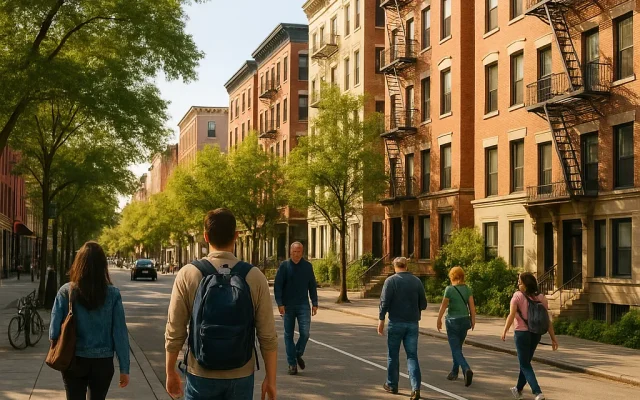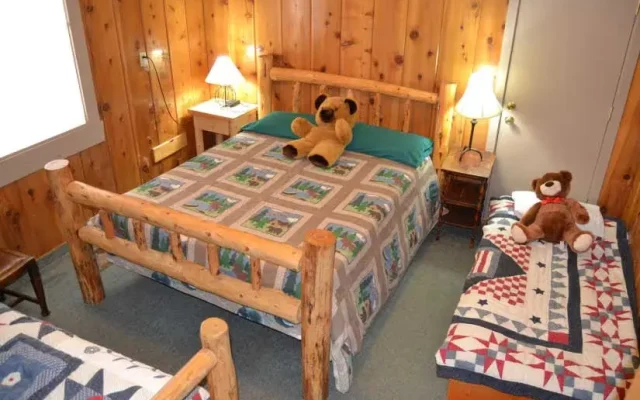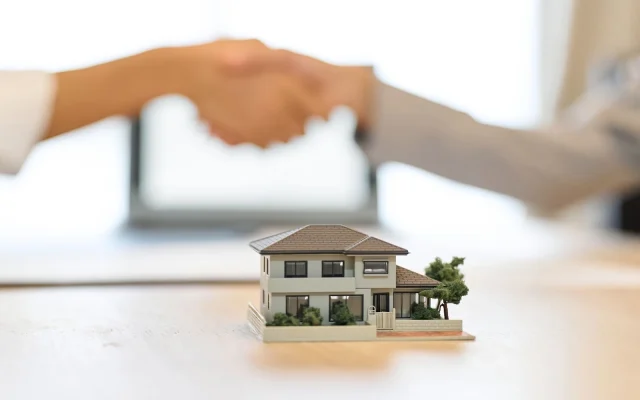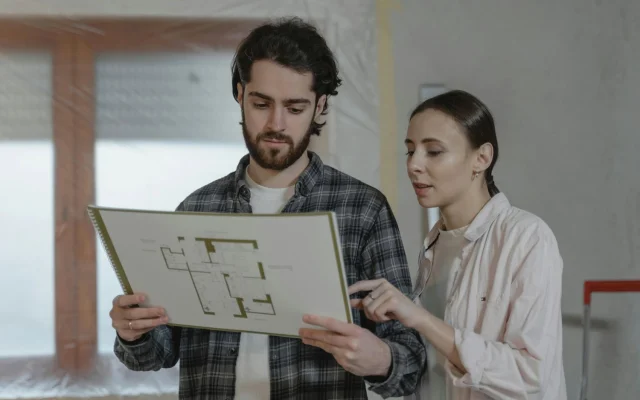The roof is an often-neglected yet important component of the home. Besides safeguarding the home from external elements, the right roof adds to the aesthetics and energy efficiency of the home. Depending on the material used and quality of installation, a typical roof lasts between 20 – 50 years. Proper maintenance and roof repair services ensure that the home stays protected and avoids structural damage in the long run.
The right type of roofing material complements your home’s design while protecting it from harsh weather elements. From classic asphalt shingles to timeless slate and eco-friendly metals, the wide variety of materials can be overwhelming for homeowners to choose from. This blog examines the most common roofing materials and types available, their benefits, and how to choose the right one for your next roofing project. We also discuss maintenance tips and how professional roofing contractors protect your roof and uplift the home’s value.
Understanding Roofing Basics
The roof appears to be one single unit, but is composed of two essential components that come together to form the home’s shield. The first is the structure, which refers to the shape and type of the roof. The second is the material or the covering.
The structure determines how the roof handles wind, rain, and weight, while the material determines the durability, insulation, and style. Together, these factors determine the cost, maintenance, and lifespan of the roof.
Asphalt, slate, metal, wood, and clay are the most common roofing materials. The choice of material depends on the climate of your home as well as the shape of the roof. Understanding the right combination of roof type and material helps homeowners to evaluate the available options and make an informed choice.
Common Roofing Materials
We break down the different roofing materials, their uses, benefits, and disadvantages below:
Asphalt Shingles
Asphalt is the most widely used roofing material, preferred for its low cost and easy installation. The different styles and colors match the design requirements of any home, are easy to install, and are affordable.
- Pros: Cost-effective, versatile, and suitable for most climates. The repairs are also simple and inexpensive.
- Cons: Less eco-friendly and might deteriorate easily in harsh climates.
- Lifespan: 15-30 years
- Best For: Asphalt roofs are ideal for standard residential homes and preferred by budget-conscious homeowners who want reliability and practicality at a lower cost.
Metal Roofing
Metal roofs are popular for their modern look, longevity, and sustainability. Mainly, steel, aluminum, copper, and zinc are used in these roofs.
- Pros: Extremely lightweight, recyclable, energy-efficient, and durable.
- Cons: Higher initial cost, and noisy during heavy rain and hail.
- Lifespan: 40 – 70 years
- Best for: Most residential and commercial properties, especially those in high-wind and snowy regions.
Clay and Concrete Tiles
Clay roofs are mostly popular in Spanish-style homes. Their thicker structure gives them a distinct aesthetic, along wth durability and easy maintenance.
- Pros: Aesthetic appeal, long lifespan, and fire-resistant. Shield from extreme heat and high winds.
- Cons: High installation cost, heavy weight, and only suitable for large, strong structures.
- Lifespan: 50-100 years
- Best for: Homes in dry, hot climates or coastal areas.
Slate Roofing
Slate falls under the high-end roofing option due to its heavy weight and cost. The carefully selected stones are broken into pieces and placed on the roof to give an incredibly beautiful appearance and added durability to the roof.
- Pros: Visually stunning, fireproof, and incredibly long-lasting.
- Cons: Very heavy and expensive. The installation is complex and requires more labor and craftsmanship.
- Lifespan: 75 -150 years
- Best for: They are more suitable for historic or high-end homes that require longevity and aesthetic appeal.
Wood Shingles and Shakes
Wood shingles and shakes give a rustic, cozy, and traditional vibe to any building. It includes machine-cut shingles or hand-split wooden shakes that come from 200-300-year-old conifer trees.
- Pros: Attractive, naturally insulating, and eco-friendly when sourced responsibly.
- Cons: Requires frequent maintenance, susceptible to fire and rot.
- Lifespan: 20-40 years
- Best for: They are perfect for cottage-styled, traditional, or natural-style homes in temperate climates.
Synthetic Roofing
These include synthetic materials, such as rubber, plastic, or polymer composites, that are designed to mimic natural materials like wood or slate.
- Pros: Lightweight, durable, eco-friendly, and low-maintenance.
- Cons: As these are new inventions, their long-term performance is still being studied.
- Lifespan: 40-50 years
- Best for: These are preferred by homeowners who want a stylish roof with low upkeep.
Popular Roof Types
The following are the most common types of roofs.
Gable Roof
This refers to a roof with two sloping sides that meet at the center ridge. They are perfect for traditional and classical buildings. The design sheds water and snow effectively, making it suitable for areas with heavy rain or snowfall. They are easier to install and maintain, but less energy efficient, as heat escapes from the sloping sides.
Hip Roof
A hip roof has four sides that slope towards the wall. It creates a stable structure that resists high winds. It is more common in areas prone to storms and hurricanes. And it is flexible, easy, and cost-effective to build, requiring fewer materials.
Flat Roof
These roofs are characterized by a modern, minimal look that makes them suitable for commercial buildings and rooftop decks. These offer additional outdoor space that can be used as a garden, a patio, or for solar panels. They require high-end materials and proper drainage to prevent leaking.
Mansard Roof
Mansard is a French-inspired design with four sides and a double slope. The shape gives the home a rustic look and additional attic or storage space. Dormer windows are often installed for natural light.
Gambrel Roof
A gambrel roof consists of two slopes on each side. The upper slope is steeper, and the lower one is shallow. It also creates extra attic or storage space. It is common in farmhouses and classic colonial designs.
How to Choose the Right Material and Type
The choice of roofing type and material depends on several factors. The most crucial factor is the climate of your home. The roof tends to get damaged by heavy rainfall, snow, hail, and high winds. Based on the weather conditions, homeowners must choose metal for areas with heavy snow and clay for areas with high heat.
Another factor is the cost of installation and maintenance. While some materials, such as metal, clay, and slate, are expensive to install, they offer durability and lower maintenance costs. Other materials, such as wood and asphalt, have higher maintenance costs and shorter lifespans. The choice of the material depends on how much you want to spend initially and in the long run.
The roof must complement the home’s architecture and style. Matching the color and decor enhances the overall curb appeal and perceived value of the home.
Roofing is not just about installation. Homeowners must be aware of the maintenance effort and costs of each material. It determines the long-term expenses and upkeep you need to perform with the roofing material.
If all the choices seem overwhelming, consult a professional roofing contractor near you. They will assess your home, climate, and requirements and tailor recommendations accordingly.
Maintenance and Longevity Tips
Maintenance is the only way to improve the appearance, durability, and performance of any roof. Schedule professional inspections every six months to identify any damage or hidden issues.
Clean the gutters and remove debris regularly to prevent water pooling and backing up into the house. Water intrusion is a major cause of roof damage. Prevent it with waterproofing and proper drainage. Promptly repair damaged or missing shingles and leaks.
If you live in a rainy area, consider roof coatings and sealants for added protection and energy efficiency. Regular maintenance keeps the roof safe, strong, and efficient for decades.
Final Thoughts
The roof is undoubtedly an asset of the house. The choice of roofing material and design affects the durability of the roof as well as the efficiency, protection, and curb appeal of your entire home. Homeowners must understand the different materials, their pros and cons, and consult with roofing experts to find the best solution for their home. Consider your home and climate when investing in a long-lasting roofing solution.
Frequently Asked Questions (FAQs)
Most roofs last between 20–50 years, depending on the material and maintenance.
Asphalt shingles are generally the most budget-friendly and widely used option.
Metal roofs and gable roofs handle snow well because they allow easy runoff and resist weight.
Yes, clay and concrete tiles are heavy and need a reinforced structure for safe installation.
They can be, but proper insulation and underlayment significantly reduce noise.
Slate is expensive but offers unmatched durability and can last over 75 years with proper care.
Ideally, roofs should be inspected twice a year and after severe weather.
They can, but they require regular maintenance to prevent mold, rot, and insect damage.
Flat roofs work well for modern designs and added outdoor space, but they need excellent drainage.
Keep gutters clean, repair damage early, and schedule routine professional inspections.
Look for licensed, insured professionals with verified reviews and a strong project portfolio.







